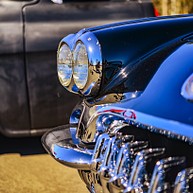
-
![Rear view of beautiful young woman standing in front of the South Roman Theater, Amman, Jordan]() Provided by: xamnesiacx84/shutterstock
Provided by: xamnesiacx84/shutterstock -
![Roman Theatre Amman]() Provided by: Leonid Andronov/shutterstock
Provided by: Leonid Andronov/shutterstock

Our travel guides are free to read and explore online. If you want to get your own copy, the full travel guide for this destination is available to you offline* to bring along anywhere or print for your trip.
*this will be downloaded as a PDF.Price
€4,95
Roman Theatre
The guide was updated:The spectacular Roman Theatre, although restored in the late 20th century, remains largely true to the way it was once conceptualised in as early as 2nd century AD. It's a highlight for most visitors to Amman, used as a venue to house open-air concerts and shows in the summer.
Useful Information
- Address: Taha Al-Hashemi Street, Amman
- More Info: You'll find the Jordanian Museum of Popular Traditions next to the Roman Theatre.
Digital Travel Guide Download
Our travel guides are free to read and explore online. If you want to get your own copy, the full travel guide for this destination is available to you offline* to bring along anywhere or print for your trip.
*this will be downloaded as a PDF.Price
€4,95

The capital's most important historic landmark is an entire area known as the Citadel, perched on top of Amman's highest elevation — the Jabal al-Qal'a hill. Its story dates back to as early as the Bronze Age, with various epochs bringing cultures and peoples who have all left their mark here. The Citadel's two primary attractions are the ancient Temple of Hercules (162-166 AD) and the Ummayad Palace dating back to the 8th century.
Read more

Roman Temple of Hercules
The so-called Temple of Hercules (AD 162–166) dominates Amman’s Citadel. These days, archaeologists prefer to call it the Great Temple of Amman, since its dedication remains uncertain. Only six Corinthian columns stand reconstructed today. The rest lie as fragmented drums, their dowel holes revealing Roman engineering techniques. A colossal marble statue once graced the site. All that survives is a weathered elbow and fingers, suggesting a figure over 13 metres tall, likely toppled in the 8th-century earthquake.
The temple’s platform doubles as Amman’s premier viewpoint, framing the modern city against the 150-metre Jordanian flag. Excavations nearby expose layers of civilisation: Umayyad palaces, Byzantine churches, and Roman baths intertwine with older Bronze Age ruins.
Though the Hercules name persists thanks to the sculptural remnant, archaeologists emphasise the temple’s civic importance. Its sheer scale reflects Amman’s status as a regional hub. Guides prove invaluable for deciphering 9,000 years of history compressed into a single hilltop.
Read more

Darat Al Funun
Darat Al Funun unites contemporary Arab art with layered history. Housed in a gracefully restored 1920s complex, its rotating exhibitions unfold alongside Byzantine ruins, including a 6th-century church at the entrance. The hillside gardens frame panoramic views of Amman, making this as much an architectural pilgrimage as an art destination.
Read more

Royal Automobile Museum
One of Amman's most entertaining attractions is the Royal Automobile Museum, mostly containing (nearly a hundred!) vehicles from the collection of late King Hussein of Jordan. Models spanning the second half of the 20th century make for an interesting look around, the latest hit addition being the very vehicle used in the filming of acclaimed "The Martian".
Read more

Roman Theatre
The spectacular Roman Theatre, although restored in the late 20th century, remains largely true to the way it was once conceptualised in as early as 2nd century AD. It's a highlight for most visitors to Amman, used as a venue to house open-air concerts and shows in the summer.
Read more

King Abdullah I Mosque
The iconic blue-domed mosque is one of the country's most recognisable attractions, a place of worship as much as a national landmark and even somewhat of a museum: a few archaeological finds and personal items of King Abdullah, who inaugurated the mosque, are also displayed here. Unlike at most other mosques, non-Muslim visitors are welcome inside, provided they follow the rules of attendance.
Read more

Rainbow Street
The Rainbow Street is in close proximity to some of the city’s must-see sites and acts as the tourist hub of Jordan. The sidewalks are wide enough for to accommodate long walks. It is an excellent destination for shops, cafes and restaurants, as well as delicious, quick bites. The weekend starts Thursday night here, with slowly cruising cars and strolling pedestrians.
The street runs east from the First Circle to Mango Street, opposite the neighbourhood of Lweibdeh. Friday during the summer, Fawzi Al Maalouf Street, just off Rainbow street, becomes the Souk Jara.
Bookable
Read more

King Faisal Street
King Faisal Street is one of the main thoroughfares of Amman. On this palm-fringed strip, gold dealers from the Gold Souq weigh bracelets under neon lights, while juice vendors press pomegranates nearby and old men play backgammon at pavement cafés. The street’s charm lies in its contrasts: the 1924 post office (now The Duke’s Diwan) overlooks a row of buzzing local businesses, and the call to prayer from Al Hussein Mosque competes with taxi horns. At night, the air thickens with the scent of sizzling lamb from decades-old shawarma stands, and crowds gather at Habibah Sweets for knafeh so fresh it crackles.
Read more

The Duke's Diwan
The Duke’s Diwan is a time capsule of early 20th-century Amman, hidden in plain sight on the busy King Faisal Street. Built in 1924 as the city’s first post office, this Ottoman-era stone house later became the Haifa Hotel before heritage activist Mamdouh Bisharat ("The Duke of Mukheibeh") rescued it from demolition in 2001. Today, its creaking wooden floors lead through rooms frozen in Jordan’s past, complete with antique typewriters, sepia photos of camel caravans on dusty roads, and a balcony overlooking downtown’s metamorphosis.
More than a museum, it’s a living diwan (gathering space): poets hold readings at the carved oak table, while artists riff under the Arabian archways. Admission is free, and the duke himself sometimes holds court, spinning tales of old Amman over cardamom coffee. Don’t miss the upstairs gallery, where rotating exhibits spotlight Jordan’s underground creatives.
Read more

Jordan National Gallery of Fine Arts
The Jordan National Gallery of Fine Arts offers a refreshing counterpoint to Amman’s ancient ruins. It showcases contemporary works from across the Islamic world in two airy buildings that flank a sculpture-dotted park. Founded in 1980 under royal patronage, its collection spans 2,000 pieces: from provocative Palestinian installations to delicate Sudanese weavings. Be sure to check the rotating exhibitions in Building 1.
Building 2 anchors the experience. Start at the ground-floor, then work your way up through bold Jordanian abstracts before rewarding yourself at the top-floor café. Its terrace overlooks Jabal al-Luweibdeh’s artsy rooftops, perfect for reflecting over mint tea after browsing the art library’s curated books. Free from crowds (and mercifully air-conditioned), it’s where Amman’s creative pulse feels most immediate.
Read more

Royal Tank Museum
The Royal Tank Museum rolls into Amman’s cultural scene with unexpected swagger, its 150 armoured beasts (from WWI relics to Jordan’s homegrown modifications) displayed with cinematic flair. Architect Zaid Daoud’s sleek 2018 design lets you circle Soviet T-34s and hulking Challengers like a battlefield rubbernecker, while interactive displays appeal to kids and military buffs alike.
Displayed chronologically, the exhibits trace Jordan’s martial legacy from the Arab Revolt’s camel cavalry to 1967’s Battle of Karamah, though the real stars are the machines. German Panzers stand next to locally retrofitted Centurions, their spec in English and Arabic. Recharge your batteries at the café on the top floor. Budget an hour, ignore the jingoistic plaques, and don’t miss the outdoor arena where (select weekends) engines roar to life.
Read more

Children's Museum
Amman's Children's Museum is surprisingly delightful. There are plenty of interactive exhibits allowing the young ones to get a hands-on approach to learning about the world, from the inner workings of the human digestive system to the mechanics of a car. Adults will enjoy continuing on to the Royal Automobile Museum next door.
Read more

Qasr al-Abd
As opposed to the omnipresent in Jordan remains of Roman and Umayyad structures, Qasr al-Abd is a rare example of architecture pre-dating the Roman era. Its exact origins remain unknown, which only adds to the fascination. Qasr al-Abd is usually described as a large Hellenistic palace from the first quarter of the second century BCE. Not too far from here are the ancient caves dating back to roughly the same time period.
Read more

The Cave of the Seven Sleepers (Ashabul Kahf)
The Cave of the Seven Sleepers in ar-Rajib village ties Islamic tradition to physical geography. According to the Quran, devout youths fleeing Roman persecution around AD 250 took refuge here, awakening 309 lunar years later in a testament to divine protection. The site, rediscovered in 1951, now includes a mosque built above the cavern, where an imam often explains the story’s theological importance.
Visitors enter through the mosque (head cover required for women) to see the rock-hewn cave and adjacent Byzantine-era tombs. Unlike ornate shrines, the site’s power lies in its simplicity: the low-ceilinged grotto and quiet courtyard encourage reflection. While Jordan isn’t the only country claiming this legend (others exist in Turkey and Syria), the presence of 3rd-century Christian graves lends archaeological weight.
Read more

Jordan Museum
The Jordan Museum offers a chronological journey through 1.5 million years of history, from Paleolithic tools to modern Jordanian culture. As the country’s premier cultural institution, it houses globally significant artefacts like the 9,700-year-old ‘Ain Ghazal statues — the world’s oldest human figurines — and fragments of the Dead Sea Scrolls. Exhibits pair these treasures with bilingual (English/Arabic) narratives that contextualise Jordan’s archaeological legacy without overwhelming casual visitors.
The museum’s modern galleries balance education and aesthetics, with interactive displays and temporary exhibitions ensuring fresh perspectives. Allot two hours to appreciate its dual role as research hub and national showcase.
Read more

Archaeological Site of Jerash
Jerash (Ancient Gerasa) looks like Rome in the Middle East. It's a sprawling Greco-Roman city where chariot ruts still groove the 800-metre Colonnaded Street. Start at Hadrian’s Arch (AD 129), then explore the Oval Plaza, ringed by 56 Ionic columns, and the Temple of Artemis looming above. Don’t miss the South Theatre: climb to the top tiers to test acoustics so sharp you’ll hear coins drop on stage.
Unlike Petra, Jerash feels blissfully crowd-free. Expert guides help decode the ruins, telling you stories of chariot races, temple intrigues and bubbling marble fountains.
Read more



